Perfect Jasmine Rice
This post may contain affiliate links. Read my full disclosure policy.
With the right water-to-rice ratio, you can make perfectly cooked jasmine rice every time.
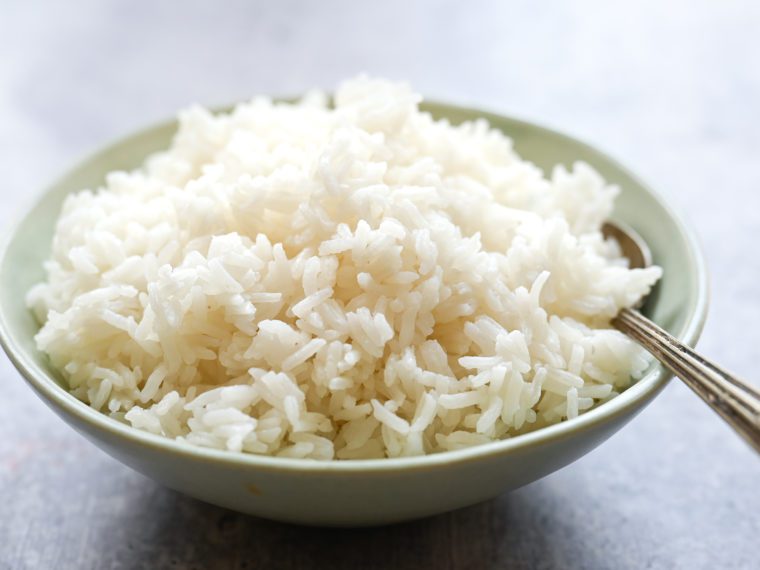
Named after the sweet-smelling jasmine flower, jasmine rice is a long grain rice native to Thailand with a delicate floral and buttery scent. The secret to cooking it perfectly is using the right water-to-rice ratio. Typically, the instructions on the package call for 1½ cups water for every 1 cup of rice. That’s fine if you like your rice “al dente,” but I prefer mine more tender, so I use a bit more water. Many recipes call for rinsing the grains before cooking but I think it’s an unnecessary extra step; even when you rinse jasmine rice, the grains have a slightly sticky texture and cling together.
As simple as rice may seem to prepare, it can be difficult to get “just right.” The key is usually tweaking the water-to-grain ratio or the cooking time. I often add a bit less water than I think I need in the beginning, then taste after steaming. If the rice is still too firm, I add a few tablespoons more and steam a bit longer. Jasmine rice is ideal for making fried rice. For more foolproof rice and grain cooking methods, see my basmati rice and couscous recipes.
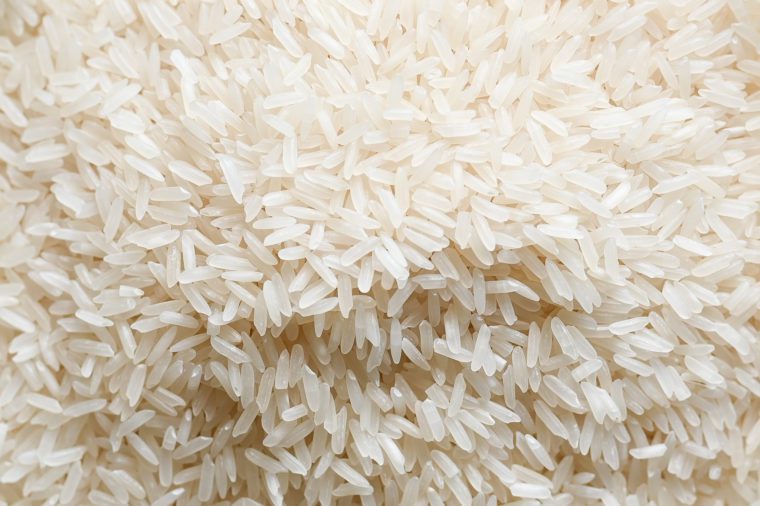
What You’ll Need To Make Jasmine Rice
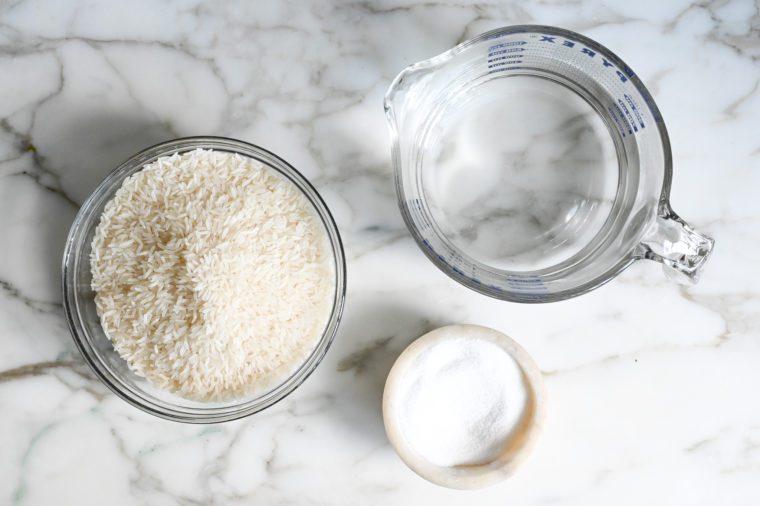
Step-by-Step Instructions
Bring the water to a boil in a medium saucepan.
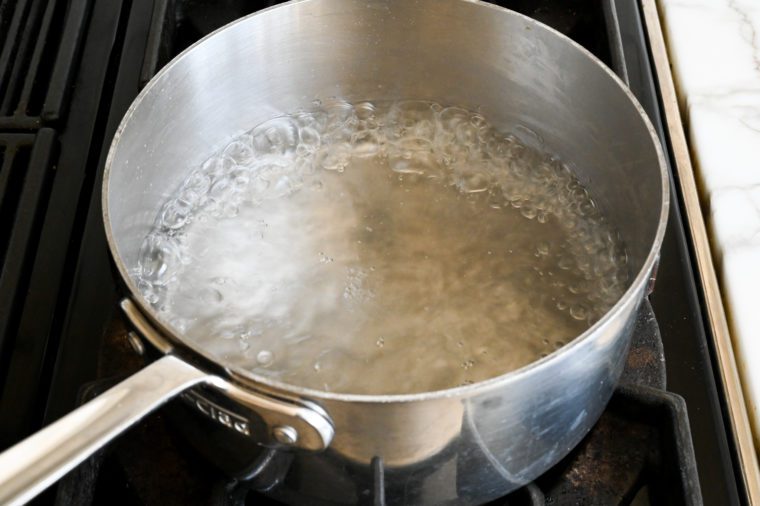 Stir in the rice and salt.
Stir in the rice and salt.
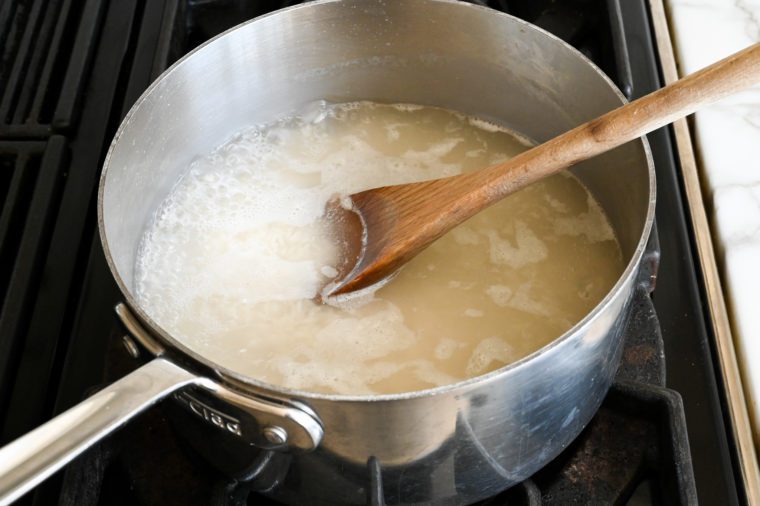 Cover, reduce the heat to low, and simmer for 15 minutes until all of the water is absorbed.
Cover, reduce the heat to low, and simmer for 15 minutes until all of the water is absorbed.
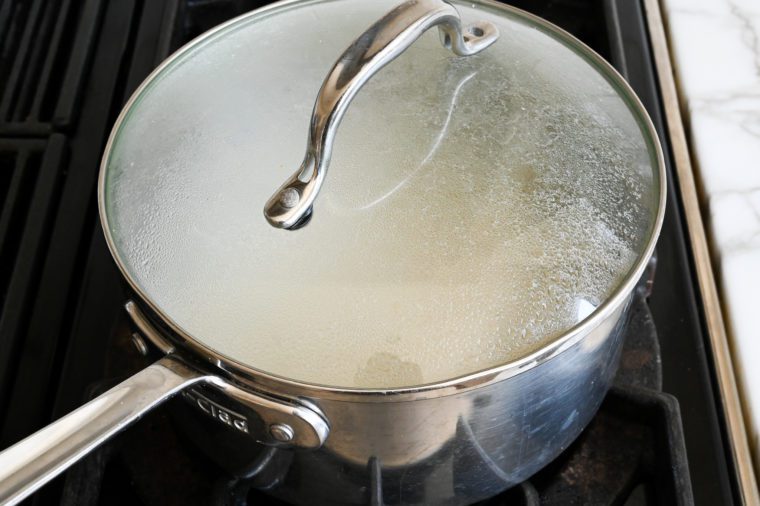 Taste the rice to test for doneness; it should be perfectly cooked, but if it is still too firm, add a few more tablespoons of water, cover the pan, and let the rice absorb the water off of the heat for a few more minutes.
Taste the rice to test for doneness; it should be perfectly cooked, but if it is still too firm, add a few more tablespoons of water, cover the pan, and let the rice absorb the water off of the heat for a few more minutes.
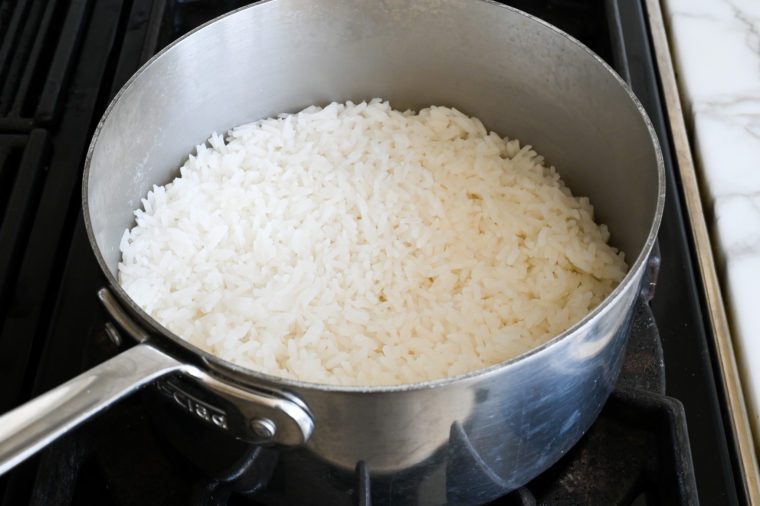
How To Freeze Jasmine Rice
Cooked jasmine rice can be frozen in an airtight container for up to 3 months. Putting it in a flat layer in sealable plastic bags works well, as the rice will take up less space in the freezer. There is no need to thaw the rice before reheating; simply remove it from the freezer and reheat in the microwave with 1 to 2 tablespoons of water.

You May Also Like
- Perfect Basmati Rice
- Cilantro Lime Rice
- Basmati Rice Pilaf with Dried Fruit & Almonds
- Mexican Rice
- Fried Rice
Perfect Jasmine Rice
With the right water-to-rice ratio, you can make perfectly cooked jasmine rice every time.
Ingredients
- 2¾ cups water, plus more if necessary
- 1½ cups jasmine rice
- ¾ teaspoon salt
Instructions
- Bring the water to a boil in a medium saucepan. Stir in the rice and salt; cover the pan and reduce the heat to low. Simmer for 15 minutes until all of the water is absorbed. Taste the rice to test for doneness; it should be perfectly cooked, but if it is still too firm, add a few more tablespoons of water, cover the pan, and let the rice absorb the water off of the heat for a few more minutes.
- Freezer-Friendly Instructions: Cooked jasmine rice can be frozen in an airtight container for up to 3 months. Putting it in a flat layer in sealable plastic bags works well, as the rice will take up less space in the freezer. There is no need to thaw the rice before reheating; simply remove it from the freezer and reheat in the microwave with 1 to 2 tablespoons of water.
Nutrition Information
Powered by ![]()
- Per serving (6 servings)
- Calories: 169
- Fat: 0 g
- Saturated fat: 0 g
- Carbohydrates: 37 g
- Sugar: 0 g
- Fiber: 1 g
- Protein: 3 g
- Sodium: 108 mg
- Cholesterol: 0 mg
This website is written and produced for informational purposes only. I am not a certified nutritionist and the nutritional data on this site has not been evaluated or approved by a nutritionist or the Food and Drug Administration. Nutritional information is offered as a courtesy and should not be construed as a guarantee. The data is calculated through an online nutritional calculator, Edamam.com. Although I do my best to provide accurate nutritional information, these figures should be considered estimates only. Varying factors such as product types or brands purchased, natural fluctuations in fresh produce, and the way ingredients are processed change the effective nutritional information in any given recipe. Furthermore, different online calculators provide different results depending on their own nutrition fact sources and algorithms. To obtain the most accurate nutritional information in a given recipe, you should calculate the nutritional information with the actual ingredients used in your recipe, using your preferred nutrition calculator.
Gluten-Free Adaptable Note
To the best of my knowledge, all of the ingredients used in this recipe are gluten-free or widely available in gluten-free versions. There is hidden gluten in many foods; if you're following a gluten-free diet or cooking for someone with gluten allergies, always read the labels of your ingredients to verify that they are gluten-free.

When It comes it comes to Jasmine rice you do want to clean the rice and rinse it with water before boiling. You will definitely get perfect quality jasmine sticky rice.
Always a success!
Hello, what are your measurements for cooking 3 cups of rice? Not using the 1.5:1 ratio. I like how your ratio came out better! Thank you
Hi Patricia, if you’re using 3 cups of uncooked rice, I’d suggest approximately 5 1/2 cups of water. Hope that helps!
Just made this – absolute fluffy perfection! Thank you for this awesome recipe!
Hi Jen.
Is it possible to make rice ahead of time earlier day of event? If so, how best to store for a few hours and then reheat?
Thanks
Carol
Sure, Carol. You can store it in the fridge and reheat in the microwave.
I was looking for arguments for/against rinsing rice and found this page. I was surprised about the arsenic comments I thought rinsing was to remove dust. Regarding the amount of water, I learned at my local asian store that rice like beans can be new or old and might require more or less water. I usually follow the recommended ratio and write down the adjustments for the current bag. Next bag check again…
Hi Jen, the reason you rinse the rice a few times or soak it, is to rid it of arsenic.Here is one article among many on the internet:https://www.nomeatathlete.com/arsenic-in-rice/
Love all your recipes! So glad i found you website.
All the best from Copenhagen
I’ve always made my rice in the microwave or in the oven as stove top was too much guesswork. This recipe worked perfectly!!! Followed it exactly as written. Beautiful jasmine rice. And it was served to Chinese guests who love their jasmine rice. Thanks, Jenn!
Hey, as far as i know, they recomend rinsing the rice also because rice has in most cases a lot af arsenic in it. By rising or soaking it you can get rid of some of that (also soaking reduces the cook time and makes it more tender, like beans, but I’ve never tried that either)
Anyways, thanks for the tips 🙂
It didn’t work for me. Again. Help!
I never had any problem with cooking rice for over 30 years. I used different types, uncle Bens converted rice, basmati rice, even no name and bulk rice from a supermarket or from a Chinese store … but I decided to try Thai Jasmine rice. Premium price. No matter how carefully I cook it there is a tiny hard central nub that stays there. With other rice I used 2 to 1 water to rice ratio with a tiny bit extra water. Or with basmati I cooked it in extra water then decanted the extra water. It always worked. When I tried the 2:1 with Jasmine rice, it was too sticky and gummy. ( no instructions on the container). So I tried the 1.5 to 1 ratio. The overall texture was much better but it still had a tiny hard core. What could be the problem?
Hi Val, it sounds like the rice is not cooked completely through. I’d suggest cooking it as you have, tasting it to test for doneness and, assuming you’re getting that hard core, I’d add a few more tablespoons of water to the pot, cover it and either put it over very low heat, or just let sit on the stove off the heat for another 1 – 3 minutes. Hope that helps!
I have never been able to cook rice. Ever. Unless it’s boil in the bag and even then I can ruin it if I’m not careful. This recipe is a game-changer. So glad I tried it and now I use it at least once a fortnight. I love being able to cook food at home that I wouldn’t usually attempt because I found cooking rice so intimidating.